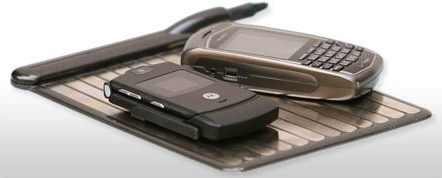
I lost the wall wart charger for my Sony Reader a couple of months ago, and a new one should be here in a few days. I don't love the Reader, as its USB transfer software unapologetically refuses to run on Windows 2000, but a guy in my business should have one, just as he should have a Kindle. In the meantime, I've been thinking a lot about wall warts, chargers, and one area of electronics that could really use a standard or two. The high road is something like the WildCharger featured recently on Crave, which is basically a pad that induces a trickle of electricity into whatever you place on it. Wotthell, that technology should be available built into computer desks, but it's not up to me.
I am very sick of wall warts. I have a bin of them downstairs, probably thirty in all, and I doubt that any two source the same voltage. The barrel connectors are of wildly different diameters, and some of them put the positive conductor on the outside. A few, furthermore, are not even barrels but weird connectors of no conceivable justification.
Damn, I want a standard.
Consider this as a possibility: A code for wall warts that could be printed on both the wart and the electrical device it's shipped with. The code would be human-readable and contain the essential parameters:
DC5-20-100-6P
The code begins with AC or DC. (There are AC wall warts, lord knows why.) The next number is the whole number voltage, separated from the fractional voltage by a dash. A second dash sets off the current sourcing capacity in milliamps. The code ends with the diameter of the barrel connector in millimeters, followed by either an N or a P, depending on the polarity of the inner conductor. For example, the code shown above would be for a DC wart sourcing 5.2V at 100 ma, with an 6mm barrel connector having positive on the inside.
There's no reason these things can't be like jelly-bean logic, and there's no reason why anyone should have to dig too hard or pay too big for a replacement wart. The IEEE should be doing something like this, but isn't.
My new Sony Reader charger will show up the day after tomorrow via DHL. And the day after that, I'm sure I'll find the original. At least then I'll have a spare.










